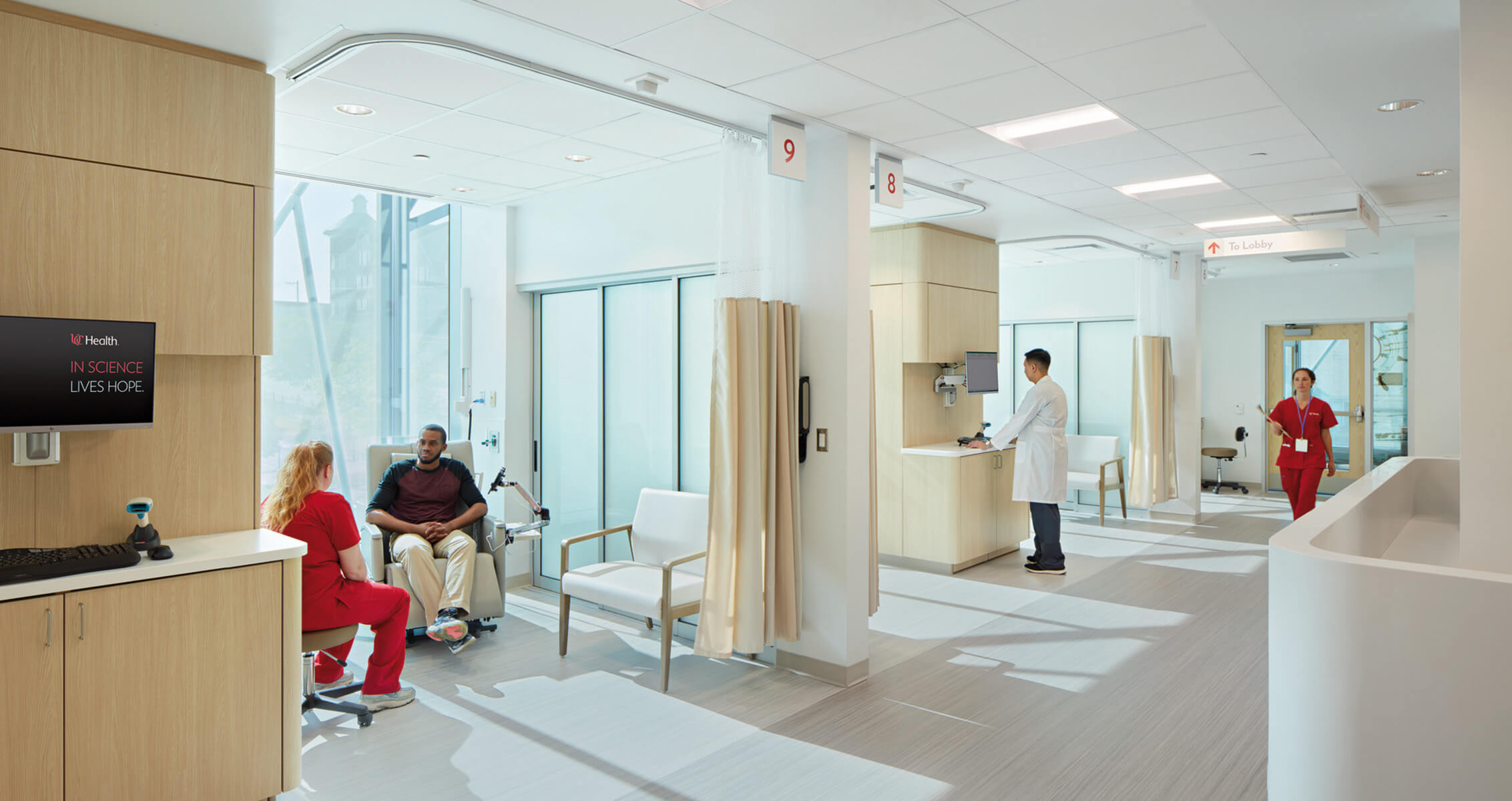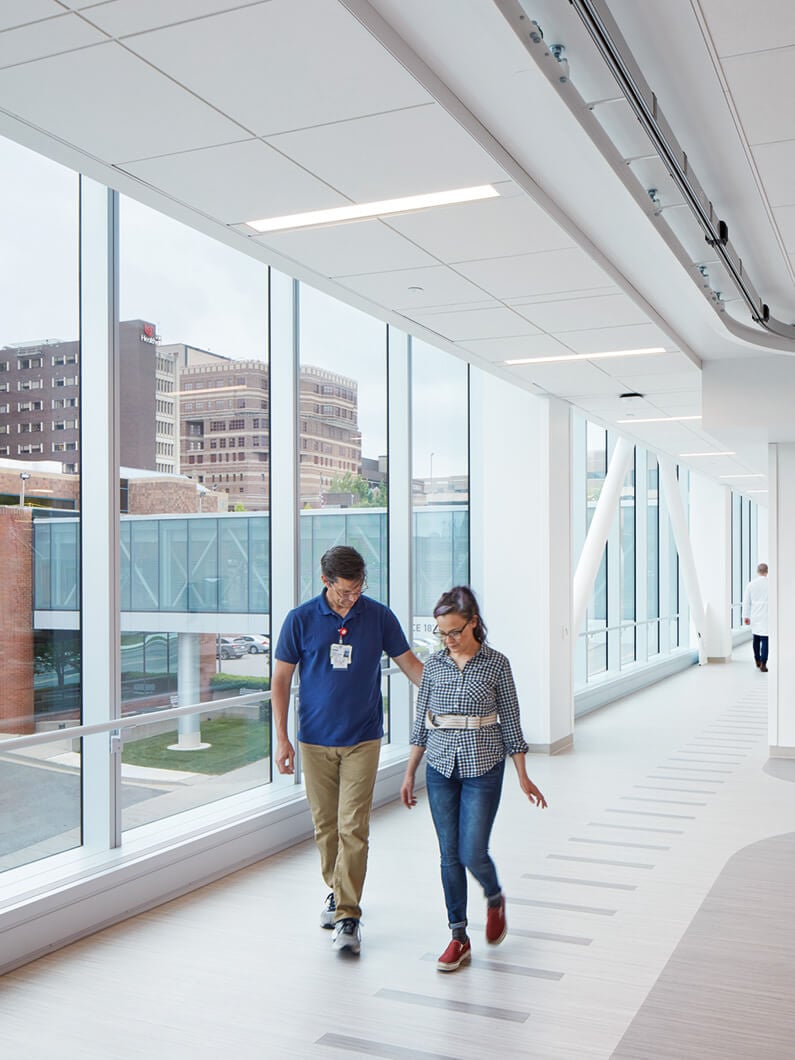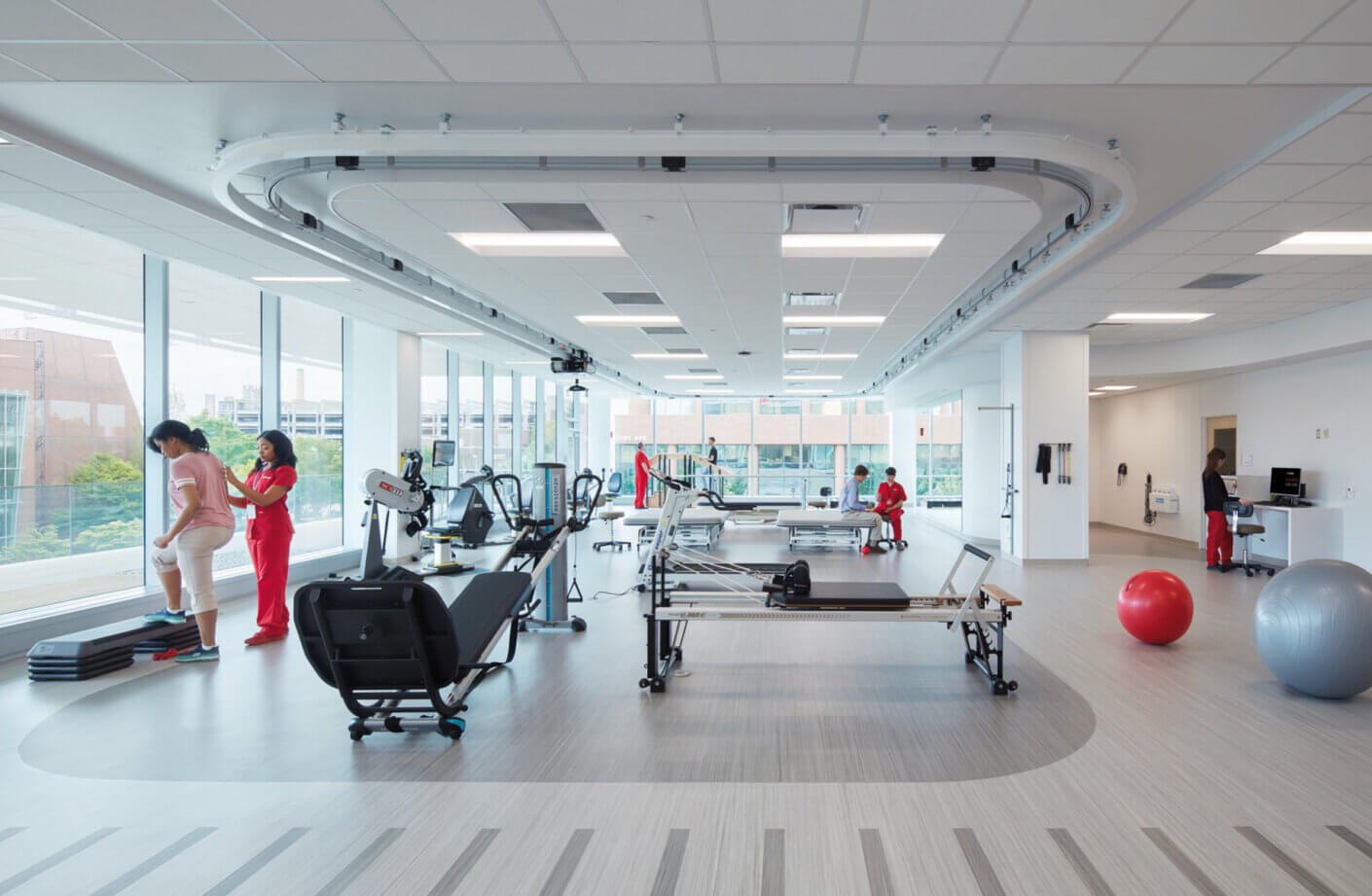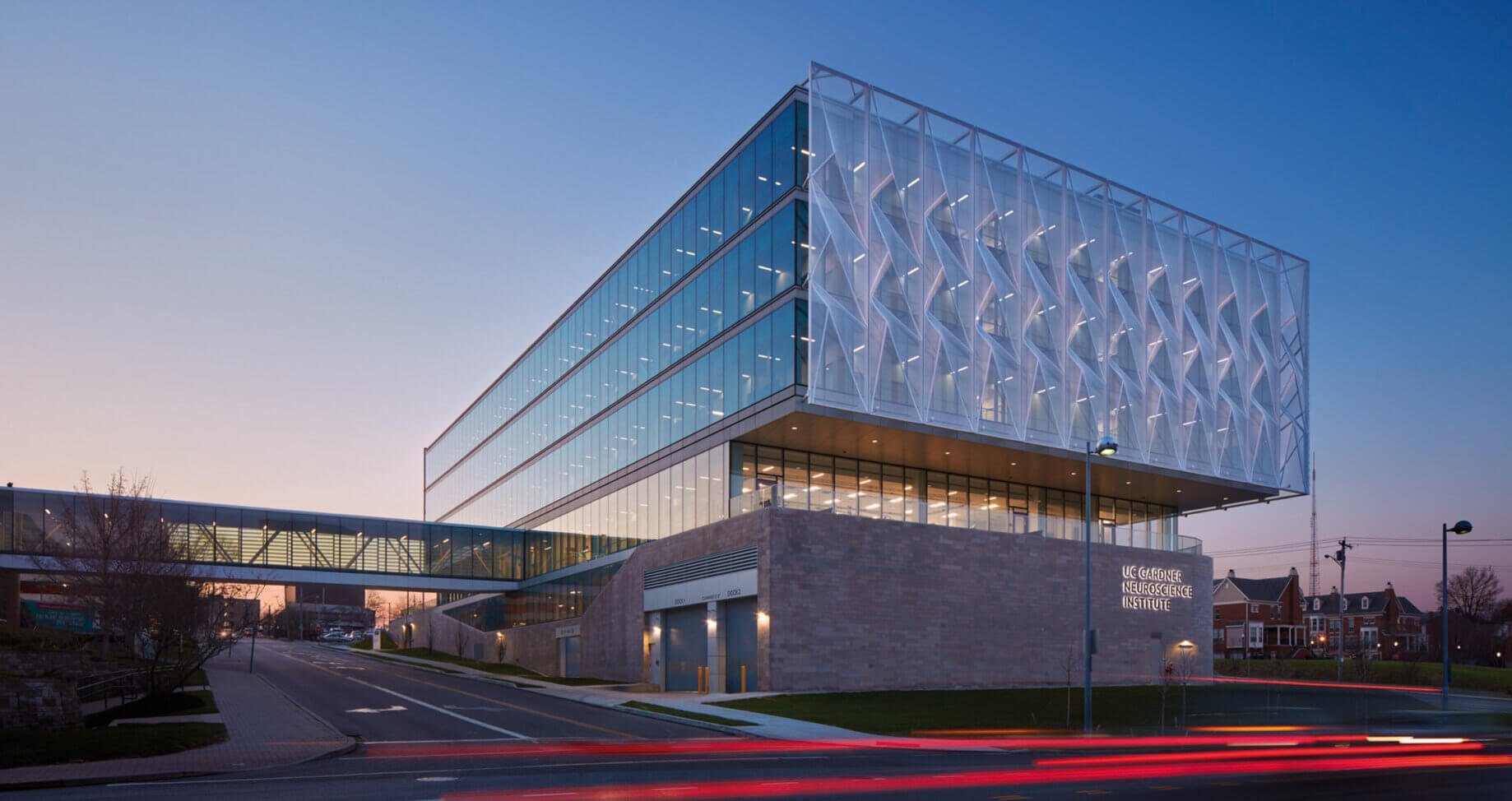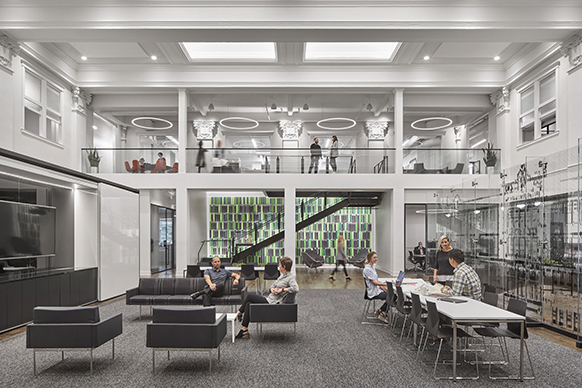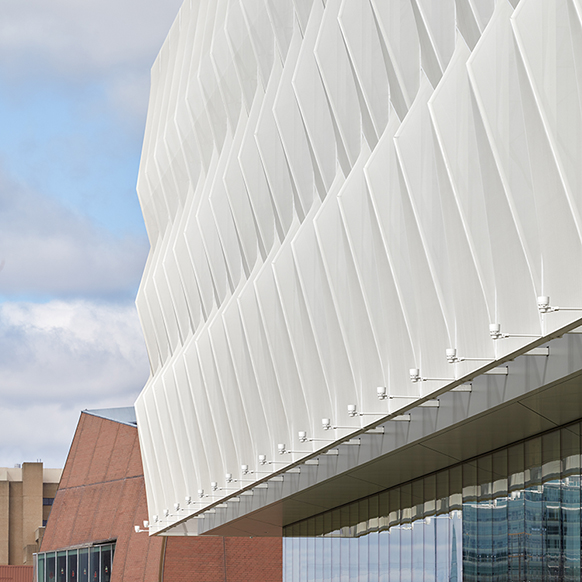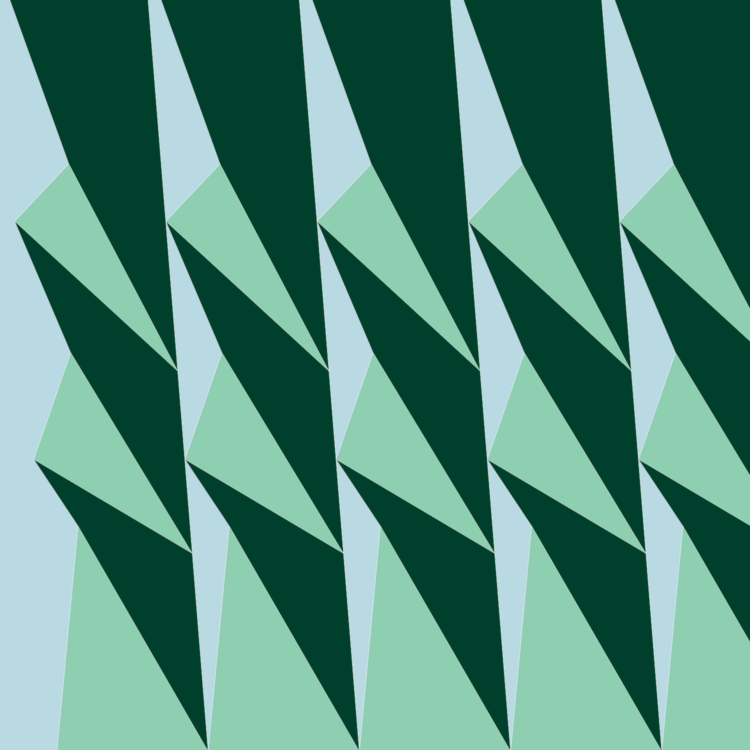Every interaction a person has at a healthcare facility, from the moment they arrive until the moment they leave, shapes their care experience and clinical outcomes. When designed intentionally, the built environment can become an active partner in healing, by fostering a sense of calm, safety, and mental restoration. At Perkins&Will, we see architecture as medicine—a powerful tool that can support care in healthcare environments, and beyond.
In pediatric and behavioral health settings, design can fuel trust, dignity, and emotional safety; in research and neurological rehabilitation settings, it encourages curiosity, collaboration, and recovery. Nowhere exemplifies this philosophy more than specialty hospitals such as neurological and neuro-rehabilitation facilities, where every design choice can impact a patient’s journey towards regaining function, cognition, and quality of life. The built environment itself becomes a form of therapy, as certain design choices can support neuroplasticity, sensory integration, and emotional regulation through carefully calibrated spatial, acoustic, and visual cues.
Designing for these patient populations requires balancing clinical precision with restorative experience, creating interdisciplinary spaces for active therapy, cognitive retraining, and family participation, as well as quiet, restorative areas. We incorporate evidence-based and neuro-architectural principles such as natural light, acoustic control, biophilic elements, and intuitive wayfinding to reduce cognitive load and promote neurological recovery.
